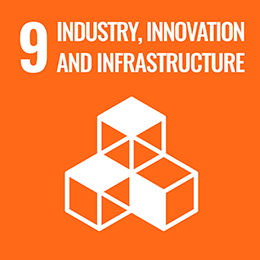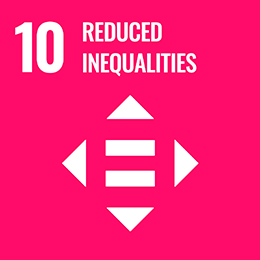Human Impact

Share this article
Apocalypse When?
“We are facing a man-made disaster of global scale…Time is running out” Sir David Attenborough
Despite the Doomsday Clock hand remaining at two minutes to midnight for 2019, the imminent threats to humanity and the planet continue as world security enters a period of 'new abnormal'.
Three of the top five risks by likelihood (and four by impact) in the 2019 Global Risk Perception Survey are environmental. Weapons of mass destruction remain a risk in a world where fact is indistinguishable from fiction, emboldening autocrats and lulling citizens into a dangerous sense of anomie and political paralysis, said Rachel Bronson, president of the Bulletin of Atomic Scientists.
The Science and Security Board is particularly concerned about the incorporation of artificial intelligence into autonomous weaponry that makes 'kill' decisions without human supervision. As the fictional future date of November 2019 in Ridley Scott’s post apocalyptic Blade Runner edges closer, many of the themes were certainly prescient.
One has to wonder however what kind of landscape Philip Dick would portray in a world 50 years from now. Three years ago—when the world was three minutes from ‘apocalypse’—we took a closer look at A World of Risk.
Back then, managing robot risk was the topic of the 2015 World Economic Forum (WEF), this year at Davos the discussion was framed around Globalization 4.0: Shaping a Global Architecture in the Age of the Fourth Industrial Revolution aiming to identify new models for peace, inclusiveness and sustainability.
Large scale involuntary migration (which at the last count was 68.5 million displaced people) is a societal risk that continues to be at the centre of the WEF’s Risk-Trends interconnections Map. Whether it is boats from Libya to Italy, or more than 3.5 million Syrians in Turkey, tackling involuntary migration is Political Kryptonite.
And that is without taking into account climate migrants from Sub-Saharan Africa, South Asia, and Latin America all moving because of crop failure, clean Water, or sea-level rise. Five out of the top 10 risks in the annual WEF report are environmental both by impact and likelihood with ‘Failure of climate-change mitigation and adaptation’ sitting in second place in both categories.
It is this risk that could see more than 143 million people being forced to move within their own countries to escape the impacts of climate change by 2050, according to World Bank report Groundswell - Preparing for Internal Climate Migration. This is further fuelling the trend of rising urbanisation and putting pressure on town planners and architects to build sustainable Cities and communities.
With international tourist arrivals hitting 1.4 billion two years ahead of forecasts, the voluntary movement of people helps to balance economies. Africa alone saw a 7% increase in international tourist arrivals in 2018, while Wellbeing is a $4.2 trillion industry, where escaping the city, detoxing, re-charging and re-treating has driven the growth of the $639 billion Wellness Tourism industry by 6.5% since 2015. But the risk of Overtourism killing the golden goose is increasing.
“We are entering a period of profound global instability brought on by the technological disruption of the Fourth Industrial Revolution and the realignment of geo-economics and geopolitical forces,” said Klaus Schwab, founder and executive chairman of the World Economic Forum.
The robot-driven Fourth Industrial Revolution, a term popularised by WEF’s Schwab in 2016, is both the problem and the solution. In Homo Deus: A Brief History of Tomorrow, Yuval Noah Harari predicts the ‘rise of the useless class as robots take jobs, and the elites getting even richer.
The 26 richest billionaires own as much in terms of assets as the poorest 50%, which according to an Oxfam report, is equivalent to 3.8 billion people. Not only have many of these billionaires have derived their wealth from the technological revolution—206 worth $1.3 trillion to be precise according to the Forbes list—but the big tech Monopoly has also facilitated the hacking of Democracy.
Not only that, the technology that was supposed to create an open platform for communication and no-border trade has in turn has fuelled the rise of populism as budding kleptocrats Monetised Anger, in part funded by the now out of favour Cryptocurrencies craze. Technological risks such as cyber-attacks, data fraud or theft and critical information infrastructure breakdown are among the top 10.
This wealth inequality has created a new Addicted class. Today, Americans are more likely to die from an accidental opioid overdose than from a vehicle crash. Yet despite this doom and gloom, Harari does see new discoveries in fields such as Biotechnology and nanotechnology creating new industries.
In an attempt to redress many of the global imbalances such as poverty, hunger, and educations, the United Nations’ Sustainable Development Goals (SDGs) are specifically targeting Reduction of Inequality and Industry, Innovation and Infrastructure with the 17 goals outlined in Transforming our world: the 2030 Agenda for Sustainable Development.
Each quarter, we will be taking a closer look at an SDG, for example Climate Action, Life Below Water and Life on Land, focusing on areas that overlap with the risks and trends, such as biodiversity loss and ecosystem collapse as well as changing climate and extreme weather events, outlined in the World Economic Forum report.
Geopolitical risks in 2019 include trade wars, oil and Brexit, meanwhile elections in Argentina, India, Indonesia, South Africa and Nigeria in 2019 could result in populist or authoritarian regimes. Governments ignoring rules could escalate in the failure of regional, national or global governance and potentially result in the use of weapons of mass destruction, which is why Peace, Justice and Strong Institutions is up for review at the High-Level Political Forum in New York in July.
Right now, there is nowhere better to see what will happen economically and politically in a ‘post truth’ environment than the UK as the 29 March Brexit deadline looms. Even before Prime Minister Theresa May’s Brexit deal was voted down in an historic Commons defeat recently, we are convinced Brexit’s Off.
Meanwhile in Europe, Vive La France. The post-World Cup victor may be battling with the gilets jaunes but the demonstrations are a symptom of the fundamental connection between environmental sustainability and social justice. As France prepares to take on the presidency of the Group of 7 industrialised nations in 2019, sustainable finance will be on the agenda, with the Paris Agreement on climate change effectively the social contract to build a more inclusive globalisation, says Brune Poirson, Secretary of State, Ministry for the Ecological and Inclusive Transition.
Flexibility and an open mind are the watchwords for an uncertain future. Whether it is the use of Graphene for bendable phone screens and solar photovoltaics, to flexible frameworks for managing money.
To tackle the global risks outlined in the World Economic Forum survey, a third watchword is required: cooperation. Imagine the world if North, South and Central America were Flying United, would Brazil’s new President Jair Bolsonaro need to promise to deforest the Amazon to win votes?
Separately, the private sector and public markets are finding ways to cooperate to finance the UN’s SDGs, which are estimated to require $5 trillion to $7 trillion per annum to finance. Institutional impact investors, such as APG and PGGM, are looking at ways to invest their portfolios using an SDG-related framework.
That said, one of the risks to the success of the SDGs particularly in the emerging markets, however, is corruption. Speaking on International Anti-Corruption Day, UN Secretary General António Guterres, said corruption is costing the world economy $3.6 trillion per annum, more than 5% of global GDP.
Today sustainability is no longer just a trendy marketing adjective, the needs of future generations—and indeed global stability—are at risk. And one that came across loud and clear at Davos 2019.
Globally, August was the 4th warmest month on record with 2018 another year of headline storms, fires and floods, making extreme weather the risk with the highest impact and highest likelihood.
Speaking at COP24 in Poland last year, Sir David Attenborough is right: time is running out. It’s two minutes to midnight.
Photo: © Niki Natarajan 2019
Artist: Otto Schade
Article for information only. All content is created and published by CdR Capital SA. The views and opinions expressed in this article are those of the author(s). Information on this website is only directed at professional, institutional or qualified investors and is not suitable for retail investors. None of the material contained on this website is intended to constitute an offer to sell, or an invitation or solicitation of an offer to buy any product or service. Nothing in this website, or article, should be construed as investment, tax, legal or other advice.
Related articles
Investor Activism
An 18-year-old asks academics and veteran finance-industry alumni when will the college’s endowment disinvest from fossil fuels? A year later, the foundation was carbon neutral. Being socially and environmentally conscious is a risk-mitigation strategy.

Game of Thrones
Inequality, migration, odd banking system, populist politics and apocalyptic climate change, sound familiar? Replacing zombies with humans surgically attached to smart-phones and Game of Thrones could be an archetypal portrayal of today’s world.

A World of Risk
“I violated the Noah rule: Predicting rain doesn’t count; building arks does” - Warren Buffett. Can you live in harmony with risk? The consensus is that if you can measure risk, you can manage it. But how do you pick which risk to manage?





